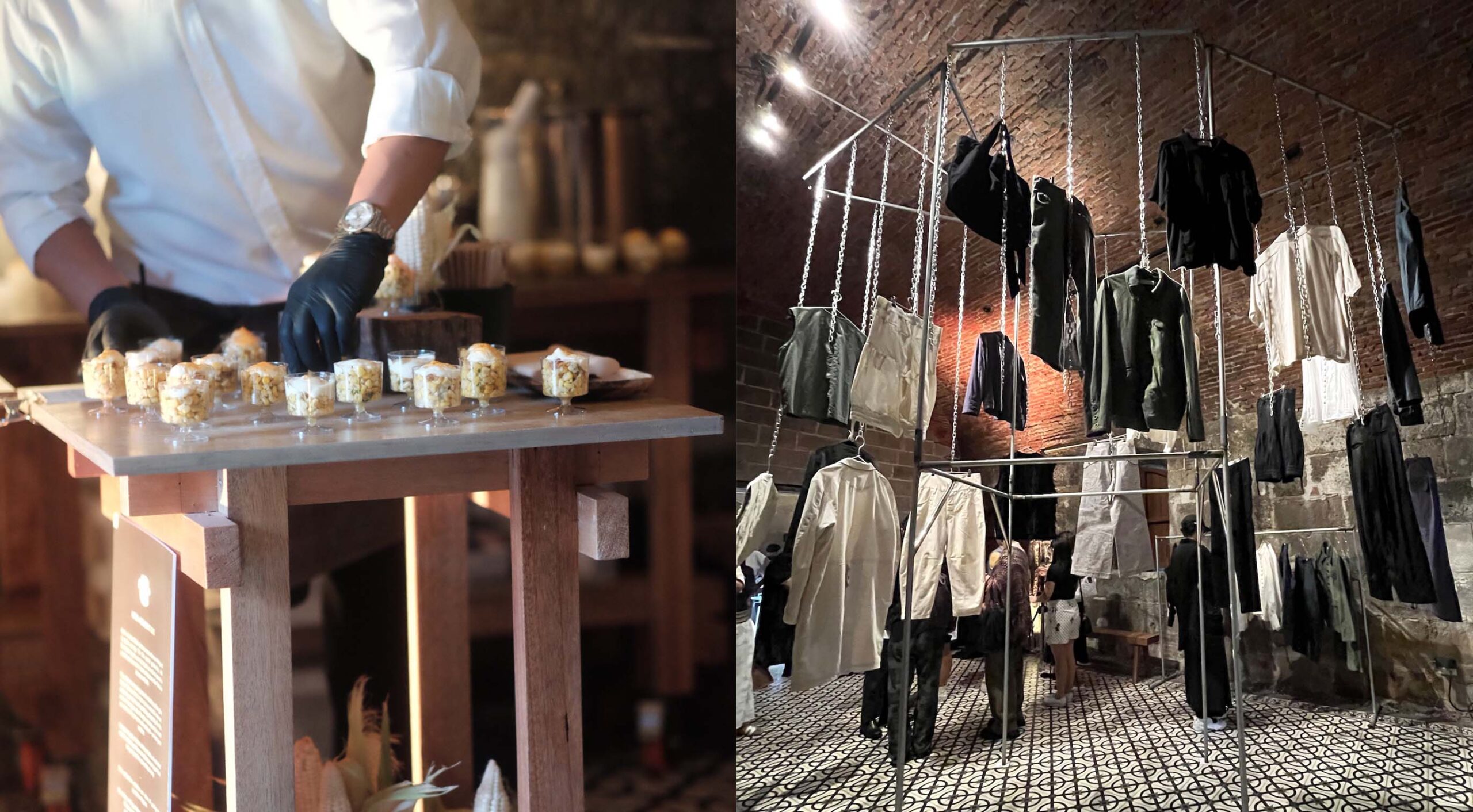In an unprecedented move, SM Markets announced a price hike of 33 percent for one of their key products: SM’s turon now costs P20 starting on the first day of the “-ber” months.
While consumers disagreed and took their dismay to social media, SM simply explained that the move was “to further ensure the high quality [consumers] have come to expect” of what they’ve dubbed the national merienda. With the rising prices of the turon’s ingredients—saba, sugar, wrapper made of flour, and oil—the underlying cause is no less than the country’s great big inflation.
Inflation is the general price increase of goods and services in the market and in September, the inflation rate surged to 6.7 percent, its highest in almost a decade, according to the Philippine Statistics Authority.
Luis Abad of the Ateneo Department of Economics explains: “Prices of raw materials have been steadily increasing since the start of the year due to several factors: rising global oil prices, depreciating peso, secondary effects of the TRAIN law specifically the increase in excise taxes, and the government’s mismanagement of the agriculture sector, especially the country’s rice supply.”

Looking by commodity group, the following have the highest indices: alcoholic beverages and tobacco (21.6 percent); food and non-alcoholic beverages (8.5 percent); transport (7.8 percent); housing, water, electricity, gas, and other fuels (5.5 percent); and restaurants, miscellaneous goods, and services (4.0 percent). All sectors directly affect the F&B industry and all these numbers point to an increase in the cost of raw materials, thus pushing the prices of food upwards.
“F&B won’t just be hit on the cost side; we can also expect revenues to go down. Household expenditures are going up, and there will be less disposable income for not-so-critical expenses like eating out and vacations,” warns Abad.
Adapting to inflation via innovation
Business owners have been experiencing the predicament in different degrees, and the solutions have been as varied. For example, with the cost of cream going up by 20 percent and sugar by 50 percent in the past year, Ian Carandang of Sebastian’s Ice Cream was left with no choice but to increase the price of his products. A regular scoop now costs P125 “and that’s stretching it already because you can only charge so much for ice cream and [ours] is on the high end already.”
“You can’t safeguard yourself from rising food prices unless your restaurant has a menu that changes every week or two,” says Gino Gonzalez.
Adapting can also take a toll on the quality of the product. An easy way out is to keep the current price but lower its quality. This is, of course, a practice frowned upon in the industry. “Speaking for myself, I can’t [do that]. Adapting means using cheaper ingredients and compromising my recipes and lowering the quality. And I refuse to do that,” says Carandang. “It is not my style to scale down portion or scrimp on ingredients just to save a few bucks because quality will be sacrificed,” agrees Gino Gonzalez of Café Ysabel.
A different approach is to re-engineer a menu. “You can’t safeguard yourself from rising food prices unless your restaurant has a menu that changes every week or two,” adds Gonzalez.
Even outside Metro Manila, inflation has taken its toll on food enterprises. “My restaurants in Davao have been affected and we don’t want to pass that burden to our customers,” says Patrick Co of Asian Cow. “Strict costing and budgeting are key for me. Some chefs tend to go all out and make their dishes fancy with ingredients. But when we innovate and create dishes, I make sure it’s always profitable.”
“Temporary losses can be handled and addressed dynamically by re-engineering menus or shifting marketing to promote more feasible and profitable items,” points out Myke “Tatung” Sarthou. But how sustainable can the practice be? How far can innovation take an enterprise when it gets to a point that operation deteriorates?
Controlling portions
“It’s really difficult for food enterprises to safeguard themselves from sudden, unexpected surges in prices. The key is really having a sound financial backbone, good leverage, and a solid market base,” says Sarthou. But having a strong financial foundation from the beginning doesn’t seem to be enough to withstand the beating. Such is the case for Belen Aleth Ocampo of Aleth’s Kitchen. It has been her practice to add a certain percentage—a buffer of sorts—to the value of her items to avoid adjusting prices when cost goes up.

“But in the past months, the percentage I allotted hasn’t been enough; so like other chefs and restaurateurs, we absorb the losses hoping prices would go back to normal range,” says Ocampo. And akin to entrepreneurs who have pledged to not scrimp on quality, she refuses make portions smaller to earn more. “If the quality isn’t good, I’d rather not serve it at all.”
Are alterations in volume more acceptable by the market than changing quality? “Portion size vs. price is tricky,” says Sarthou. “It’s really a value proposition. There is no rule to this—you just have feel your way around what is acceptable to your specific market. Some markets are more portion and price sensitive than others.”
Sorting sources
Ocampo opens up on another plight: “It’s sad to say we are at the mercy of our suppliers.” But James Antolin of Ikomai offers a solution. “We need to help, partner with, and educate our farmers; to produce what is in demand and help them modernize systems of production. If we can help them produce efficiently and locally, we don’t have to go elsewhere. We don’t need to spend dollars or euros to purchase our ingredients elsewhere.”
The farming industry is just as affected by the inflation surge. Producing high quality crops relies heavily on energy and gas; the upkeep and maintenance of farms have caused lower profits for farmers. Farmers can choose to increase prices but they fear losing regular buyers in doing so.
“The best way would be to purchase the basic ingredients needed for their operations in bulk,” suggests economics instructor R. Lance Chua.
“Inflation almost doesn’t affect production of crops because the materials used are readily available in the environment anyway. But it’s the lives of the farmers that are greatly affected by it,” says chef-farmer Isaiah Ortega. These days, farming has become a survival of the fittest, with more and more farmers choosing to leave the trade because it no longer presents itself as a viable source of income.
“The government should offer support during this financial calamity. A safety program should be implemented at these times; like maybe invest more in food security and offer more ways for farmers to earn,” suggests Ortega.
Keeping confident
But there will always be hope, especially for Filipinos, who’ve been branded with a type of resilience impalpable elsewhere. Isi Laureano of Chili Asylum remains resourceful at this time of dread. “I keep a good relationship with my suppliers so that even if the prices increase, they don’t end up suffering as much.”
With a business that heavily relies on chilies, a produce whose price has skyrocketed, Laureano takes matters into her own hands by growing her own ingredients. “You have to remain confident that you can still make good food even if you don’t have your usual ingredients.”
Her other solution? Stock up on ingredients. “I usually do that since I need my chilies and other ingredients to ferment anyway. I preserve ahead so that when food prices go up, I don’t have to deal with the effects as much.” It’s a move that even experts recommend, especially for small-scale businesses. “The best way would be to purchase the basic ingredients needed for their operations in bulk,” says economics instructor R. Lance Chua.
“You have to remain confident that you can still make good food even if you don’t have your usual ingredients,” says Isi Laureano.
For medium-sized enterprises, Chua suggests price-pegged contracts that last for six months to a year to help fight fluctuations while bigger firms can always opt to import some of their raw materials overseas. “The best way to deal with inflation is to be on the offensive side,” he adds. But, of course, doing so without sacrificing on basic foundations, such as taste and quality, that every business is built on.
Laureano admits to selling her products at a higher price but does so with full acceptance that everyone—from suppliers to customers—has to do their part in keeping the industry throbbing.
There’s no place for lonely people in the open sea.












































